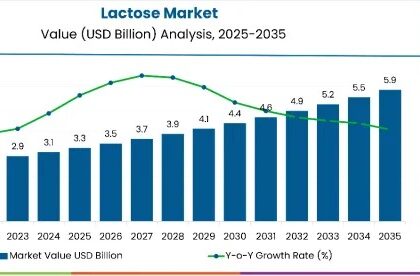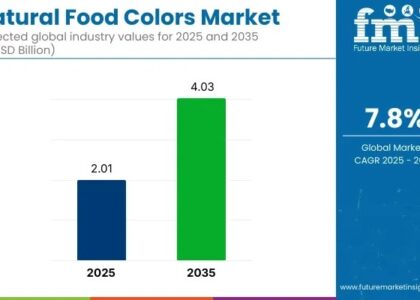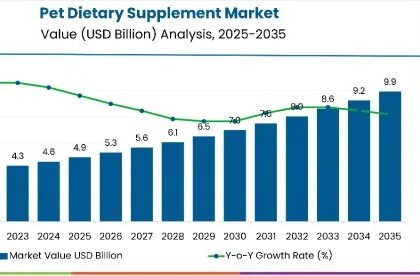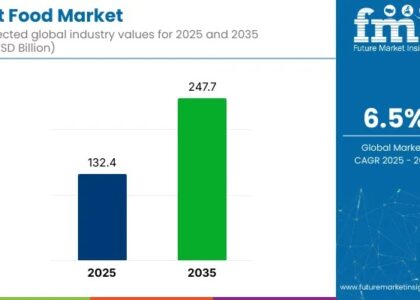
The global low-calorie sweeteners market is poised for significant growth, with its valuation expected to exceed USD 29 billion by 2022 and expand at a CAGR of 4.7% over the forecast period (2022-2032). By the end of 2032, the market is projected to reach a valuation of USD 46 billion. This market accounts for approximately 20% of the global sweetener market, which was valued at USD 137 billion in 2021. The growth of the low-calorie sweeteners market is primarily attributed to the increasing preference for healthier alternatives to regular sugars and sweeteners.
The demand for low-calorie sweeteners is being driven by the rising prevalence of lifestyle disorders such as diabetes and obesity. Consumers are becoming more health-conscious and are actively seeking food products with lower levels of sugar and carbohydrates. As a result, key manufacturers are incorporating low-calorie sweeteners into their products to cater to this growing demand. Sweeteners such as stevia, aspartame, neotame, advantame, sucralose, acesulfame potassium, and saccharin are being used to provide the same taste as sugar but with fewer calories.
Get Sample Report Now:
https://www.futuremarketinsights.com/reports/sample/rep-gb-14897
Key Factors Driving Market Growth:
- With the rising prevalence of lifestyle diseases, consumers are increasingly focusing on their food choices. This is resulting in decreased consumption of high-sugar and high-carbohydrate products, thereby boosting the demand for low-calorie sweeteners.
- Following the COVID-19 pandemic, there has been a surge in the consumption of healthy and nutritious meals. Low-calorie sweeteners, considered a healthier alternative to sugar, have witnessed increased demand.
- Manufacturers are improving their product offerings by including natural low-calorie sweeteners such as stevia in their portfolios. These sweeteners are cholesterol-free and vegan, appealing to health-conscious consumers.
- Key companies are leveraging e-commerce and internet marketing to reach customers across borders, helping them regain their foothold in the market post-pandemic.
Key Takeaways from the Soy Protein Concentrate Market Study:
- Between 2022 and 2032, the North American soy protein concentrate business is expected to grow at a rate of more than 8%, owing to increased demand for healthier baked items.
- Asia-Pacific will remain the largest soy protein concentrate market, with sales expected to reach USD 1.8 Billion by the end of 2032.
- By the end of 2032, sales of soy protein concentrate for animal feed are expected to account for more than two-fifths of the soy protein concentrate market.
- The liquid soy protein concentrate segment is predicted to grow at a quicker rate than the dry soy protein concentrate segment through 2032, despite the fact that the former will continue to be more profitable.
- Due to the growing use of soy protein concentrate in the food and beverage industry, the emulsification segment is likely to dominate the European market. The high emulsification qualities also contribute to the dominance.
Country-wise Analysis of Soy Protein Concentrate Market:
- United States:
- The increasing prevalence of obesity and related disorders in the U.S. is driving the demand for low-calorie sweeteners. Dietary experts are encouraging the consumption of low-calorie foods, boosting the market for these sweeteners in food items.
- Germany:
- Over the past half-decade, more than 48% of consumers in Germany have been actively reducing their intake of high-calorie and high-fat desserts. This trend is driven by the rising incidence of lifestyle diseases such as cardiovascular diseases, diabetes, and thyroid disorders. As a result, there is a growing demand for low-sugar desserts, which is propelling the market for low-calorie sweeteners.
- China:
- The diabetic population in China is rapidly increasing, with one out of every ten Chinese adults having diabetes. Additionally, the obesity rate in China is expected to rise over the next decade due to unhealthy eating habits. This has led to increased awareness of health issues arising from sugar consumption, driving the demand for low-calorie sweeteners.
Competitive Landscape: The low-calorie sweeteners market is dominated by multinational players such as DuPont and Nestle. These companies are focusing on both organic and inorganic strategies, such as mergers and acquisitions and new product innovations, to expand their market footprint. Packaging also plays a crucial role in maintaining product quality, value, and shelf life.
Recent Developments:
- In December 2020, Sweet Green Fields (SGF), a global stevia solutions business, was acquired by Tate & Lyle. This strategic move was aimed at entering the fast-growing Asia Pacific market and taking advantage of SGF’s specialized stevia production plant and R&D labs located in Anji, China.
About Future Market Insights (FMI)
Future Market Insights, Inc. (ESOMAR certified, recipient of the Stevie Award, and a member of the Greater New York Chamber of Commerce) offers profound insights into the driving factors that are boosting demand in the market. FMI stands as the leading global provider of market intelligence, advisory services, consulting, and events for the Packaging, Food and Beverage, Consumer Technology, Healthcare, Industrial, and Chemicals markets. With a vast team of over 400 analysts worldwide, FMI provides global, regional, and local expertise on diverse domains and industry trends across more than 110 countries.
Contact FMI:
Future Market Insights Inc.
Christiana Corporate, 200 Continental Drive,
Suite 401, Newark, Delaware – 19713, USA
T: +1-845-579-5705
For Sales Enquiries: sales@futuremarketinsights.com
Website: https://www.futuremarketinsights.com
LinkedIn| Twitter| Blogs | YouTube





